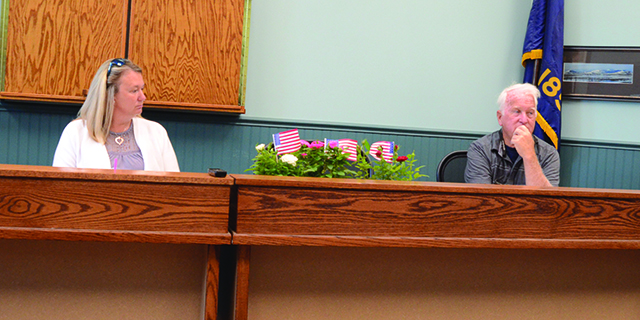Coronavirus and COVID-19: It’s going to be a long haul, part 1
Published 9:18 pm Sunday, April 5, 2020
The aim of this article is to provide some context for a better understanding of COVID-19 while avoiding topics best left to medical and health professionals. Hop on board and we’ll travel in scale from microscopic events to government response.
A virus is a sub-microscopic infectious agent. Although viruses have genes they do not have a cellular structure, do not have their own metabolism, and cannot reproduce outside a host cell.
Trending
The SARS-CoV-2 coronavirus causing the COVID-19 pandemic has spikes on its surface which are coated with a protein that serve as a molecular key. That viral protein binds to a specific protein on the surface of cells in the human respiratory tract and lungs. Once bound, the virus’ genetic material then enters the human cell. The cell does not recognize the intruding material so its machinery is hijacked to produce many copies of the viral proteins and viral genetic material. These components self-assemble, are extruded, and the process repeats itself in adjacent host cells.
This cellular injury activates the body’s generalized immune response. In patients that defeat the viral infection, the immune response stays localized to infected tissue. But if the immune response can’t keep up with the rate of viral replication, or if it spins out of control and causes extensive collateral damage to uninfected lung tissue, the situation becomes life-threatening and the lungs and other organs may fail.
The weakness of a virus is its requirement to find new hosts. The way to slow and stop a virus is to reduce its transmission. Social distancing (especially the 6-foot rule) reduces transmission and helps flatten that exponential curve.
But while social distancing is very important, adding other interventions is a better solution.
Stay-at-home takes social distancing a step farther. You leave your home only for medical care or supplies, to restock low food stocks, or for work identified as essential. Homemade masks should be worn by everyone in public areas since virus in respiratory droplets can hang in the air for up to 3 hours. Hotspot cities should be quarantined with the exception of delivery of supplies and essential workers. International travel should be banned (with some exceptions) to minimize recurring introduction of the virus. These are hard pills to swallow given American culture but we must face we’re living in a new reality.
How did the nation end up in today’s mess? Multiple agencies at the federal level did not move fast enough to deal with the looming disaster and prior to that the government repeatedly kicked the can down the road. Some say we couldn’t have imagined this kind of event would occur. That is simply not true. For two decades computer models had simulated pandemics similar to COVID-19 and their medical, supply chain, economic, and social impacts. Government agencies had come together to conduct mock pandemic response exercises for decades. The government’s threat assessments warned the nation was ill-prepared for and vulnerable to pandemics.
Trending
One of the biggest failures was the inability to quickly implement a robust early testing program. On Jan. 12 China shared the genetic sequence of the virus with the world so tests could be developed for positive identification of the new coronavirus. Early testing is a critical part of the surveillance foundation on which defense against emerging disease is built; it identifies cases entering a country and identifies the initial locations (when patients test positive) where the virus had seeded.
The U.S. was slow in developing its test, and there was (and is) a massive shortage of tests. The result? Throughout February scientists and the government were largely blind to the true infection rate and to where the virus had spread. It took until the second week of March to understand the U.S. had been walking for six weeks while the virus was sprinting.
Wallowa County’s high degree of physical isolation and low population helps us. But don’t be complacent. Some towns in rural America are now experiencing outbreaks. Delivery trucks and commuting workers come into our county every day. Studies have shown the majority of those infected with coronavirus don’t know they have it, and they’re contagious for days. It’s going to be a long haul. Stay informed and be vigilant! It’s going to be a long haul.
Fred Brockman, retired research microbiologist, rural Lostine








